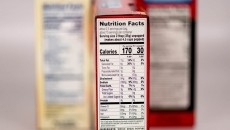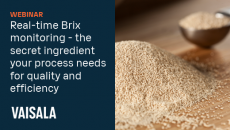Less energy usage is claimed for novel pasteurisation process
At the Anuga FoodTec show in Cologne last week, leading Fraunhofer researcher, Thomas Pfeiffer, spoke about the heating process that is based on the application of radio frequency fields inside a water bath.
He said that while somewhat similar research has been carried out in North America, the Fraunhofer project is unique in European terms.
According to Pfeiffer, the radio-frequency water bath method can be used for many food heating tasks as long as the food is tightly packaged and the package is transparent for the electric field.
Low energy consumption
Speaking to FoodProductionDaily.com, he said that the method overcomes many of the restrictions of current sterilization techniques, which have high energy consumption, and it also improves on the newer microwave heating and conventional radio frequency methods that, he claims, can result in limited penetration and edge overheating.
Pfeiffer said that there has been a lot of interest in the project from the food processing sector:
“What attracts the interest of industry is the possibility to speed up the heating of food packages by a factor of about 10 and, moreover, the prospect of replacing energy consuming autoclaves by a continuous process that requires less energy and saves on time and space.”
Heating process
He said that the method uses two flat plate electrodes as applicators, with the space between the electrodes being filled with de-ionised water and the food packages then immersed in this space:
“Due to its high dielectric constant, the water is a much more efficient transfer medium for the electric field than air, and without slowing down the heating process, water as medium enables the reduction of electrode voltage by about one order of magnitude, thus eliminating the flash over you get with standard radio frequency heating.”
Package testing
The project team tested a number of different packages, said Pfeiffer, including pouches and vacuum pouches made from PA/PE or other films, CPET trays, glass jars with metal screw caps and plastic sausage casings.
“The one requirement is that the package is hermetically tight and the packed food will not contaminate the de-ionised process water. Metal packages like cans cannot be used, since they are not transparent for the electric field,” he said.
Pfeiffer said that the team is currently evaluating the compatibility of the heating process with polar film materials in thin layers such as EVOH.
“We want to apply the process to as many different food products as possible. Cook/chill convenience foods are an interesting category for rapid and quality retaining heating to better preserve their freshness of character.
“Ultimately, we have to try each food product and package format in order to judge its viability for sterilization by this method.”
Best in class
He said, though, that the team has achieved the best heating results so far with homogeneous foods such as single solid blocks of food material like tofu slices, cylindrically formed sausages, and jars filled with liquid or solid liquid mixtures.
Pfeiffer said that the method has also been used to cook or boil products like large sausage for cold cuts, while using the process for rapid boiling of ham is also an option.
Quality control
He maintains that the team did not see anynegative effects on products in the hundreds of experiments they conducted with real food packages.
“Indeed, we have seen quality improvement in products through the reduction in thermal processing time with benefits including juicier fish or less softened vegetables.”
Combination of factors
Pfeiffer said that in order to obtain simultaneous microbiological safety and the least possible thermal degradation of the product, it is important to have a very good temperature control.
According to Pfeiffer, there is no inherent temperature limit in the radio frequency water bath heating process itself, but that the team’s experiments were generally conducted at temperatures of up to 95°C.
“We try to heat the whole product volume rapidly to the required temperature without overheating parts of the product. In order to achieve this, we have to work on finding the best combination of process parameters for the specific product and package.
“This involves parameters like electrode voltage and exposition time, but also package positioning and orientation towards the electrical field vector and using shaped electrodes to improve uniformity of the electric field inside the food product.”












